
"I'm just less evolved than you are..."
Jim Harrison in "Ghosts of Tsavo"
|

|
Queasy dread has not been overcome. I have heard that acute anxiety can be a side effect of Larium. Whether the demons are pharmaceutical or not, I read from the Psalms to excorcise them. The first - "And he shall be like a tree planted by the rivers of water, that bringeth forth his fruit in season; his leaf also shall not wither; and whatsoever he doeth shall prosper" – the 95th - "O come let us sing unto the Lord; let us make a joyful noise to the rock of our salvation" - and the 118th - "I called upon the Lord in distress; the Lord answercd me, and set me in a large place. The Lord is at my side; I will not fear... " Those ancient and beautiful words help some, but not enough. I walk outside to look at the heavens, and the southern stars are a wonder. I recognize some constellations from my own hemisphere, Orion and Canis Major and Ursa Major, but most of the others are unknown, and that's fine. I don't need to know their names; their beauty is sufficient unto the day. In my mind's eye, I draw lines from the pointer stars of the Southern Cross and from the "false cross" above, and mark where they intersect - that's true south. The Dipper lies low on the horizon, and its pointers aim at Polaris, in Ursa Minor, also lower on the horizon than it is at home. True north. I turn, aligning myself between the two poles and extend my arms at right angles to my body. True east. True west. Thus I try to center myself, as the Lakota and Cheyenne and Ojibwa did when they turned to face the Four Sacred Directions. It might seem a little odd, mixing a shot of the Bible with a jigger of Native American religion, but when you are out in the African bush, 300 miles from the nearest doctor or Hospital, and feel like you're losing your mind, it's not a bad cocktail. I walk around a bit to shake off my nervousness, and am startled for a millisecond when I practically bump into the two dummy lions. At night, they look all too real. Paul Simon sings in the ear of my mind:
The pale yellow moon shone in his eyes. His path was marked by the stars of the Southern Hemisphere, And he walked his days under African skies. At the fire pit, embers glow faintly. A waterbuck snorts out in the Kanderi swamp. Far off, an elephant screams. What on Earth am I doing here? I think of Marianne. A little like ancient Athens... slaves to do the dirty work so Plato ard Aristotle ard that lot could sit ard think. Eight days ago, Bob and I were driven to Tsavo from Nairobi by Verity's driver, a short, stocky Kikuyu named Sammy. We stopped at the roadside and pitched into the cooler for sandwiches and a beer. A villager appeared, quite literally appeared out of nothing, like some wretched genie sumnoned from wherever genies spend their time. His belly was sunken, his glassy eyes haunted by hunger, his clothes ragged and filthy. He didn't beg, didn't speak a word, just stood there, his very presence a reproach. I couldn't eat. I gave him my sandwich, an act of charity akin to giving aspirin to someone racked by deep bone pain. So what if some lions have manes and others don't? Who cares why they do what they do? Isn't this expedition pointless? Considering the conditions in this country, and in most of black Africa, doesn't inquiring into all these fine points of animal behavior represent a form of decadence?
And he walked his days under African skies.
Under these African skies at two in the morning, it is best to be candid with myself, since such candor cannot hurt anyone. I yearn for the poet's, the songwriter's response to the natural world. I´m a little weary of the empirical approach, all these infrared cameras and skull measurements and data sheets. Data. Data. Data. Art and science, that hoary chestnut of a conflict. Candidly speaking, Phil to Phil, some part of me resists Craig and Peyton and Gnoske and Kerbis Peterhans and their theories and hypotheses, tests and experiments. I long for the company of a naturalist like John Muir, for whom the petal of each mountain flower was "a window through which we may see the Creator." And that also answers the question, What am I doing here, under African skies?
Philip Caputo, a real hunter, in "Ghosts of Tsavo"
|
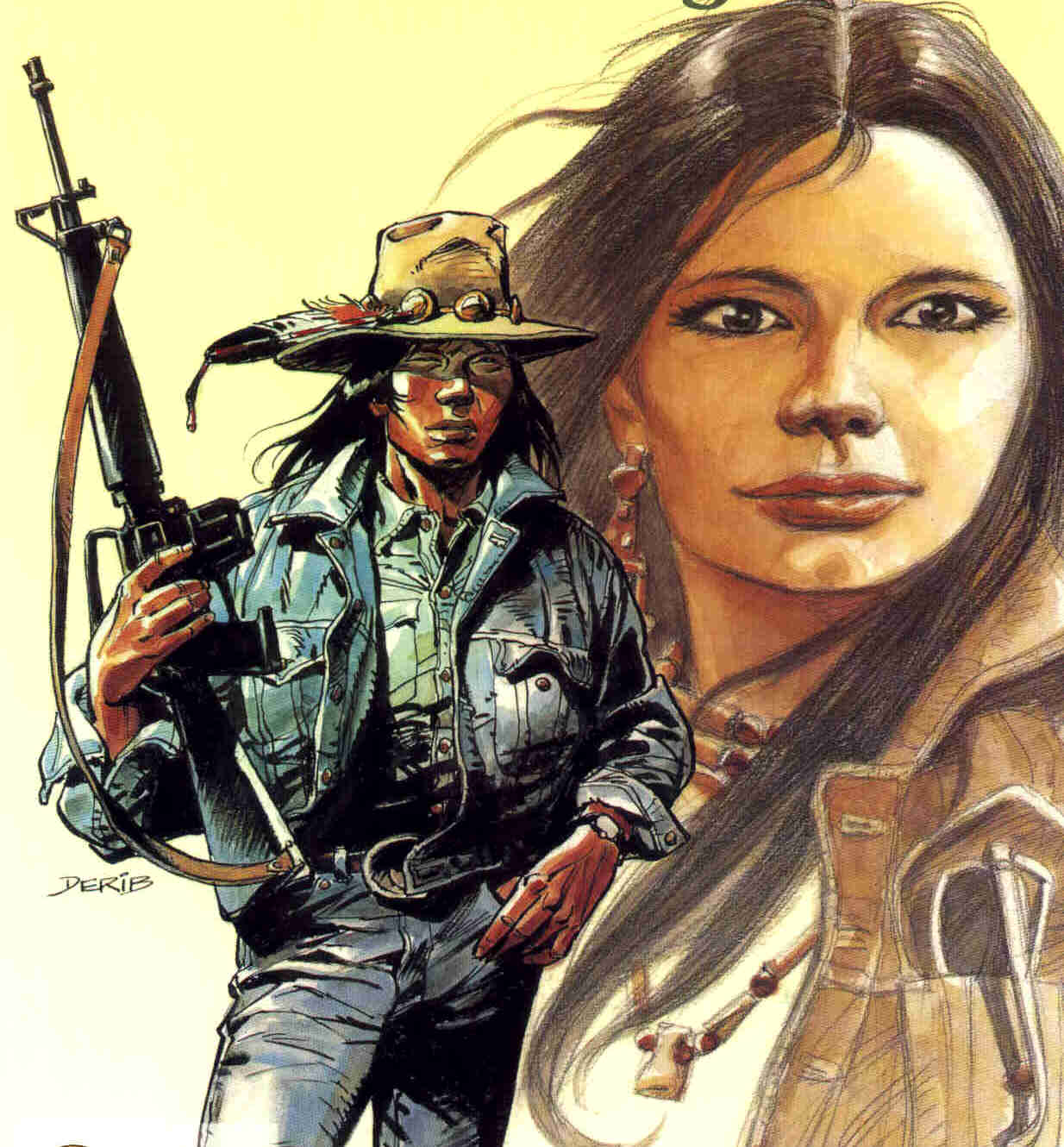 Nice picture, eh? The artist of this picture is a humanist who dislikes terrorism and unnecessary violence, and so I am. But I am even more against national terrorism, security- and control madness, power hungry secret service men who cheat in elections, racism and suppression of minorities and against dull, ignorant citizens who don't see or want to see their real enemy.
Nice picture, eh? The artist of this picture is a humanist who dislikes terrorism and unnecessary violence, and so I am. But I am even more against national terrorism, security- and control madness, power hungry secret service men who cheat in elections, racism and suppression of minorities and against dull, ignorant citizens who don't see or want to see their real enemy.
I am also not one of this security freaks who think all problems are solved when all weapons are taken away from the civilians. This is only not dangerous when you disarm corrupt military and police men at the same time. The British Bobbies show that this is possible (But I don't want to hide the fact that the UK has evolved into the worst control regime in Europe, too). I think that you have to distinguish strictly between possession of weapons, for example to fend off animals, and their misuse.
Terrorism is a strange weed, the more you try to root it out and hack it in pieces with brute force, the more it grows in the underground and returns even stronger. Perhaps it may be a better idea to dismiss the gardener in this case. I will always be on the side of human rights.
About Indians...
Indians, especially the indians of the plains and forests of North America are a people which fascinates me. Many tribes have a deep spirituality and a shamanism which reminds of the religions of the Far East, but is connected to the living nature even more closely. The religions and laws in smaller tribes which feeded mostly from hunting usually have been more individual and democratic than these of the highly developed indians of Middle America which have founded their culture mostly on corn.
Unfortunately even the indians have not been free of war and pilfering, the reasons have been mostly the scarce food supplies, after the discovery of America there were also quarrels about horses. But torture and cruelty initially have been common only in a few eastern tribes and the habit of taking scalps was adapted from the white men, too. The indians had a stringent code of honor in their fights, wounded and mentally deranged people have frequently been spared. Fights during night time have also been avoided for religious reasons, otherwise these disciplined guerillas would have been able to resist the white conquerors much harder.
But anyway their efforts have been remarkably successful, if you consider the fact that they had to face much better armed militaries. The Sioux shaman Sitting Bull got a vision of the death of many white men, shortly before the famous battle at the Little Big Horn. Crazy Horse, a military genius and a mysterious person which has been photographed only once, lead the Oglala Sioux successfully against the troops of general "Long hair" Custer. It is believed that Crazy Horse was a "white indian" who was adapted by the Sioux, he also didn't participate in the ritual self-torture of the sun dance.
But in the battle of the white government troups, nothing was given for free. Crazy Horse was lead into an ambush and killed and several years after the Big Horn battle, many Sioux and their chief Big Foot have been massacred at the Wounded Knee Creek. The place of the massacre was brought back to the media in recent years when the American Indian Movement occupied the site to make the world aware of their political situation.
And the end has been only delayed, because the conquerors decimated the bisons and other wild animals which formed the base for nourishment of the indians. The end of the indian wars was reached when chief Wovoka cloaked his head in a piece of cloth and proclaimed that only the way of the white man is open for them now; the indians moved into the reservations which have been provided for them.
In the meantime the situation of indians has improved a little, some run casinos where they relieve truckers and tourists of a few dollars, others work in the cities. But they are still an outsider group in the USA which officially rule the reservations on their own, but which still suffers from reprisals and discriminations in the daily life. When I visited California I had the pleasure to visit together with an American friend the Round Valley Reservation, where six (!) different tribes from several regions of the USA have been crowded together. In the other reservations the situation probably isn't much better, too.
Unlike other minorities, indians rarely find attention in the press, many don't have a lobby. I would like to present on this page a selection of movies and literature and I hope that it can show a little of the spirit of this fascinating people.
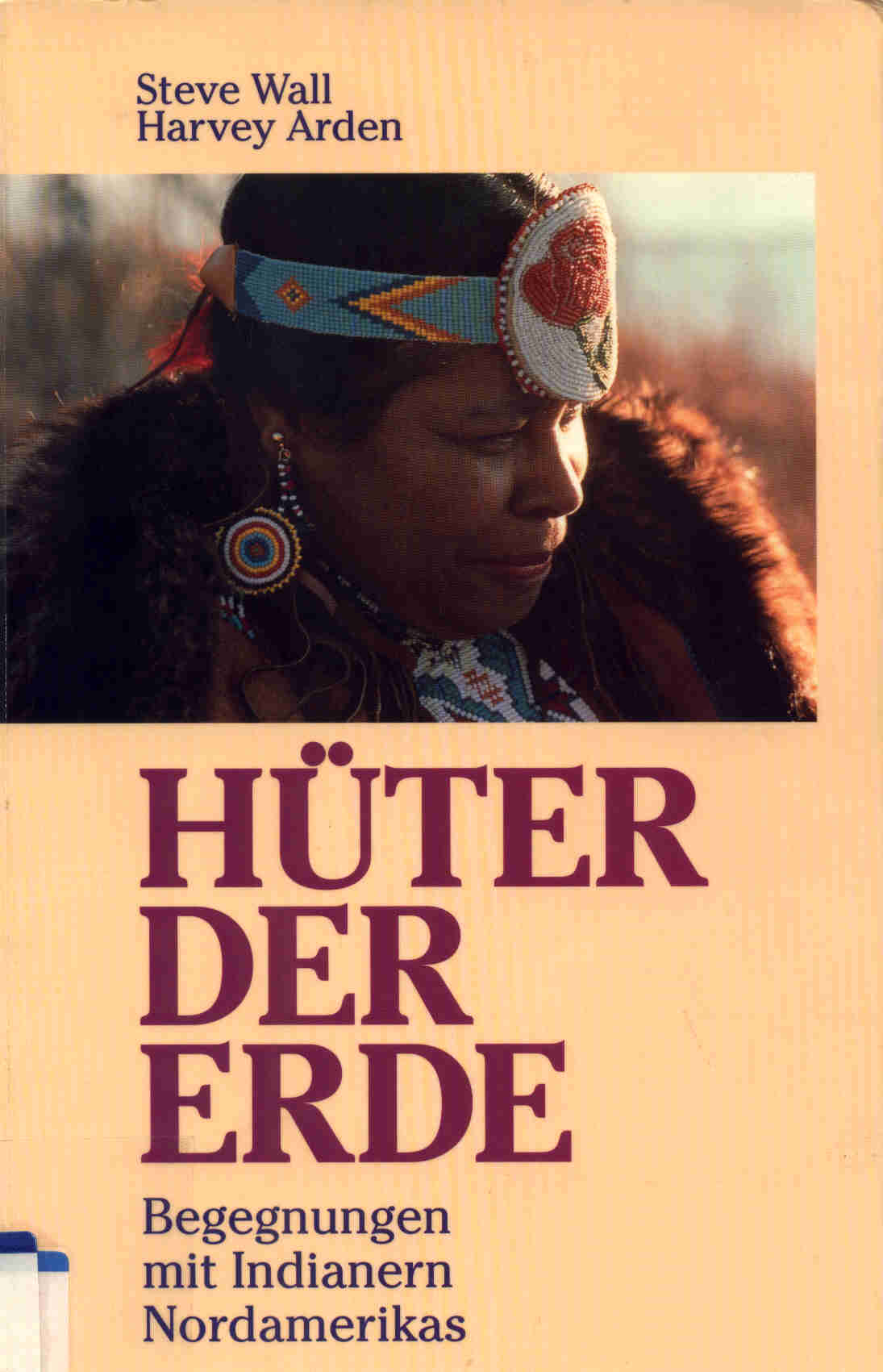
"Wisdomkeepers" is a beautifully illustrated book for people who want to get a first overview of the different philosophies of various tribes. The authors Steve Wall and Harvey Arden talk to medicine men and shamans everywhere in the USA, my favorite is the Onondaga Oren Lyons who proclaims: "I can say you that there are no mysteries. There only is the healthy common sense."
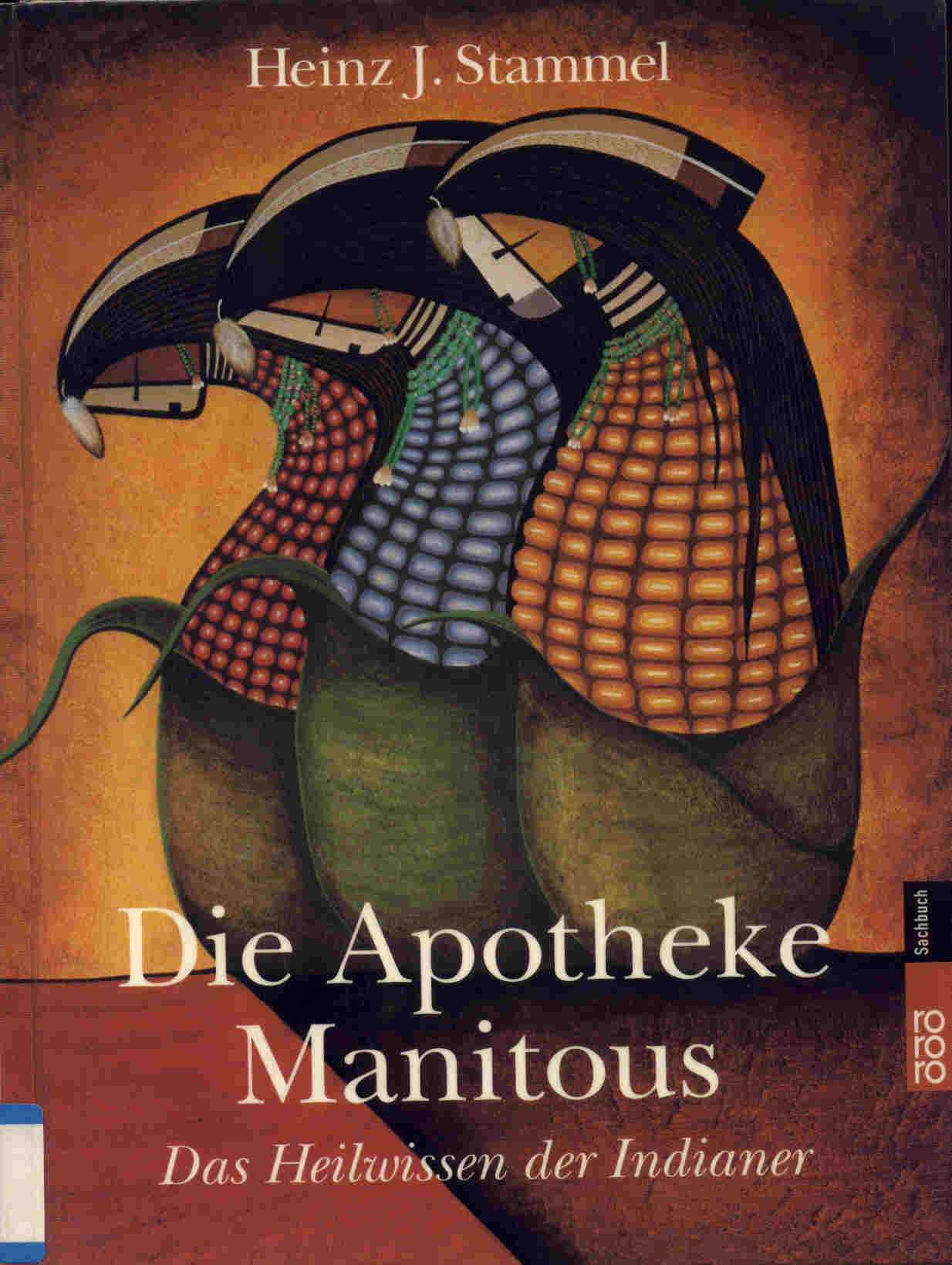
"Die Apotheke Manitous" (The apothecary of Manitou) by H.J. Stammel is an extensive work about the art of indian healing and a good reference for friends of nature healing methods. This book does not only describe in length the differences between the primitive "heroic" medicine of the white settlers and the indianic medicine, it also describes important medicinal herbs and has a section devoted to mysteries and shamanism of indian healers. Can be highly recommended!
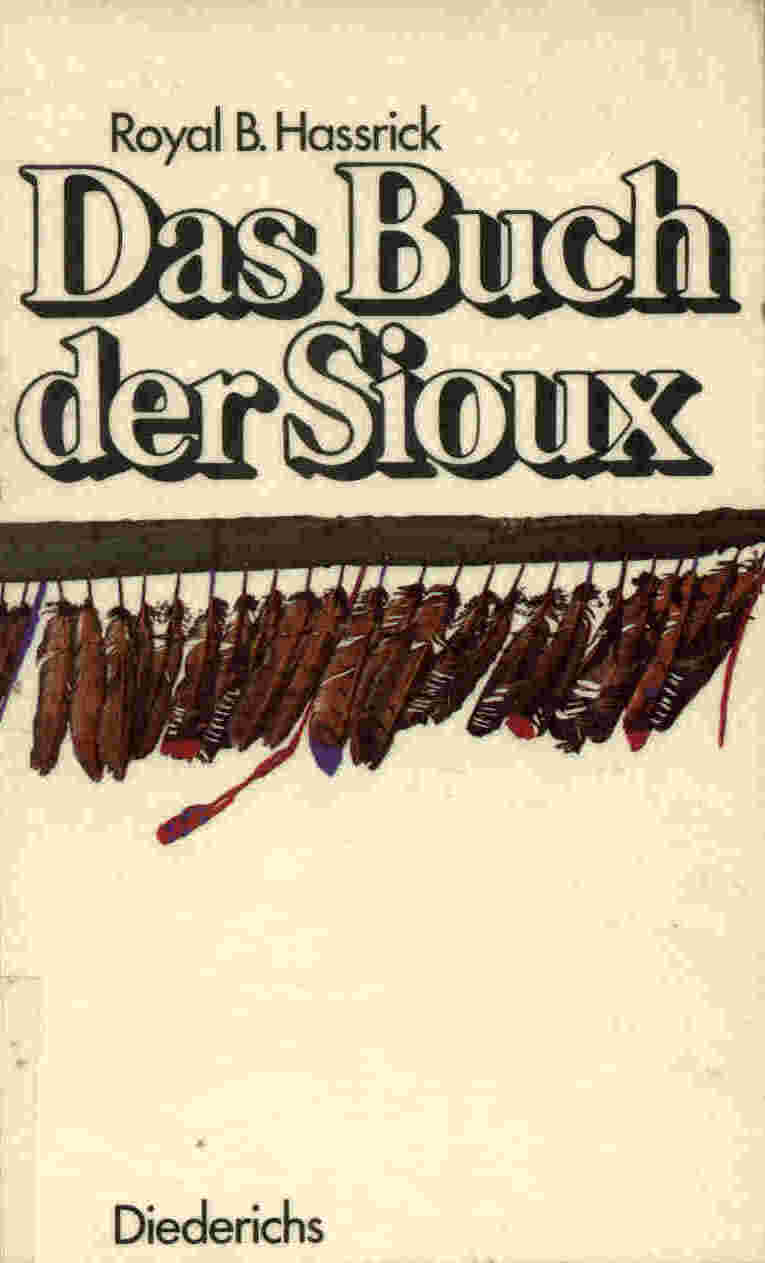
"The Sioux" by Royal B. Hassrick is a good documentation of the tribe of proud bison hunters which has become prototype for the North American indians and has inspired countless authors from Karl May to Derib.
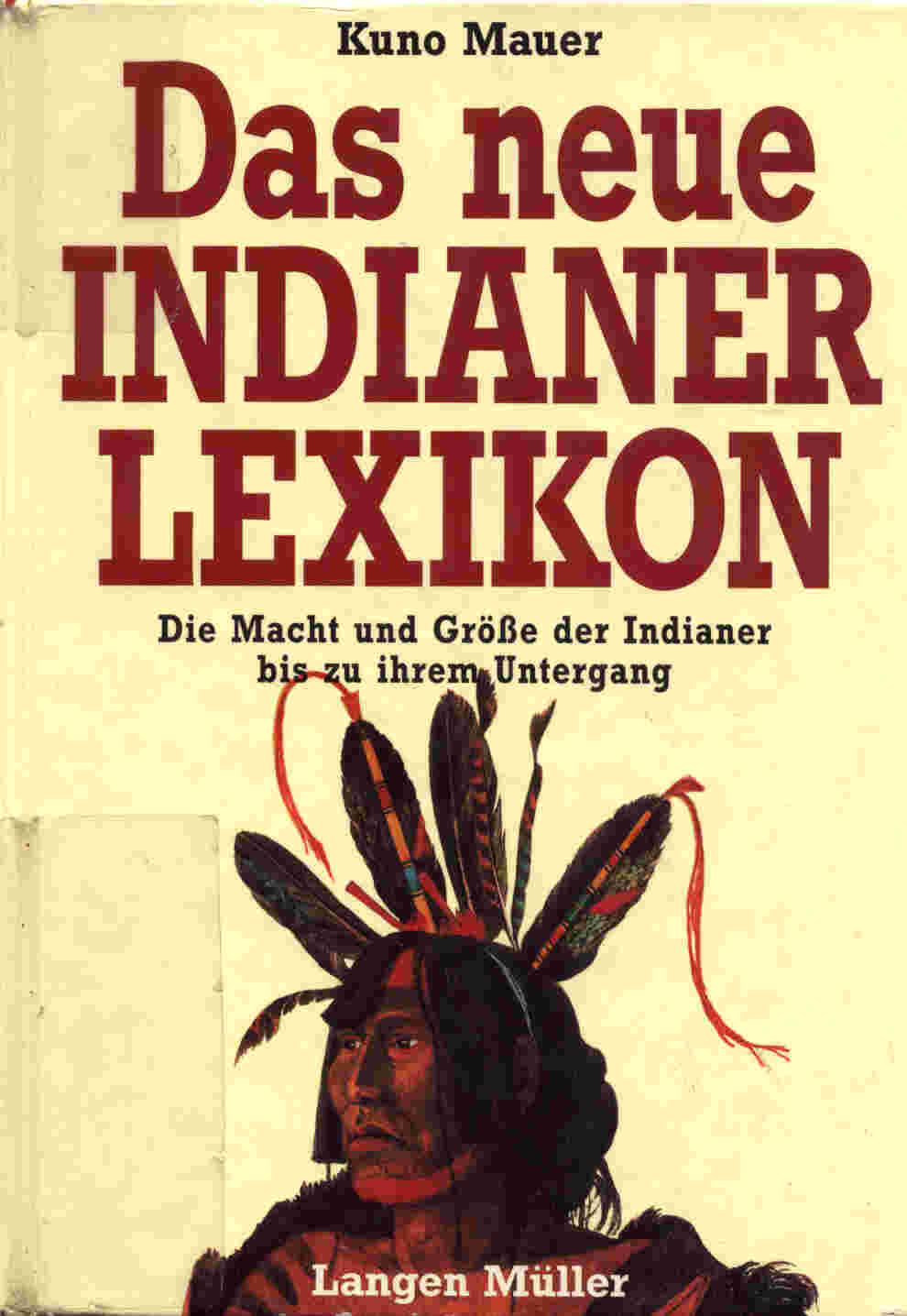
"Das neue Indianer-Lexikon" (Indian encyclopedia) by Kuno Mauer is an extensive research material. Here you can learn about the probably white origin of the indian national hero Crazy Horse or about the visions of Sitting Bull and Deganawida who has foreseen the union of the Five Nations of the Irokese tribes. Interesting.

"Indianer" (Indians) by Larry J. Zimmerman is a good book for beginners. The different tribes are described in detail here, there also is information about religion and the current political situation of the indians in North America.

"In harmony with nature" by Adolf Hungry Wolf contains many indian documentations, legends and ceremonies. Notable is the chapter about "white indians".
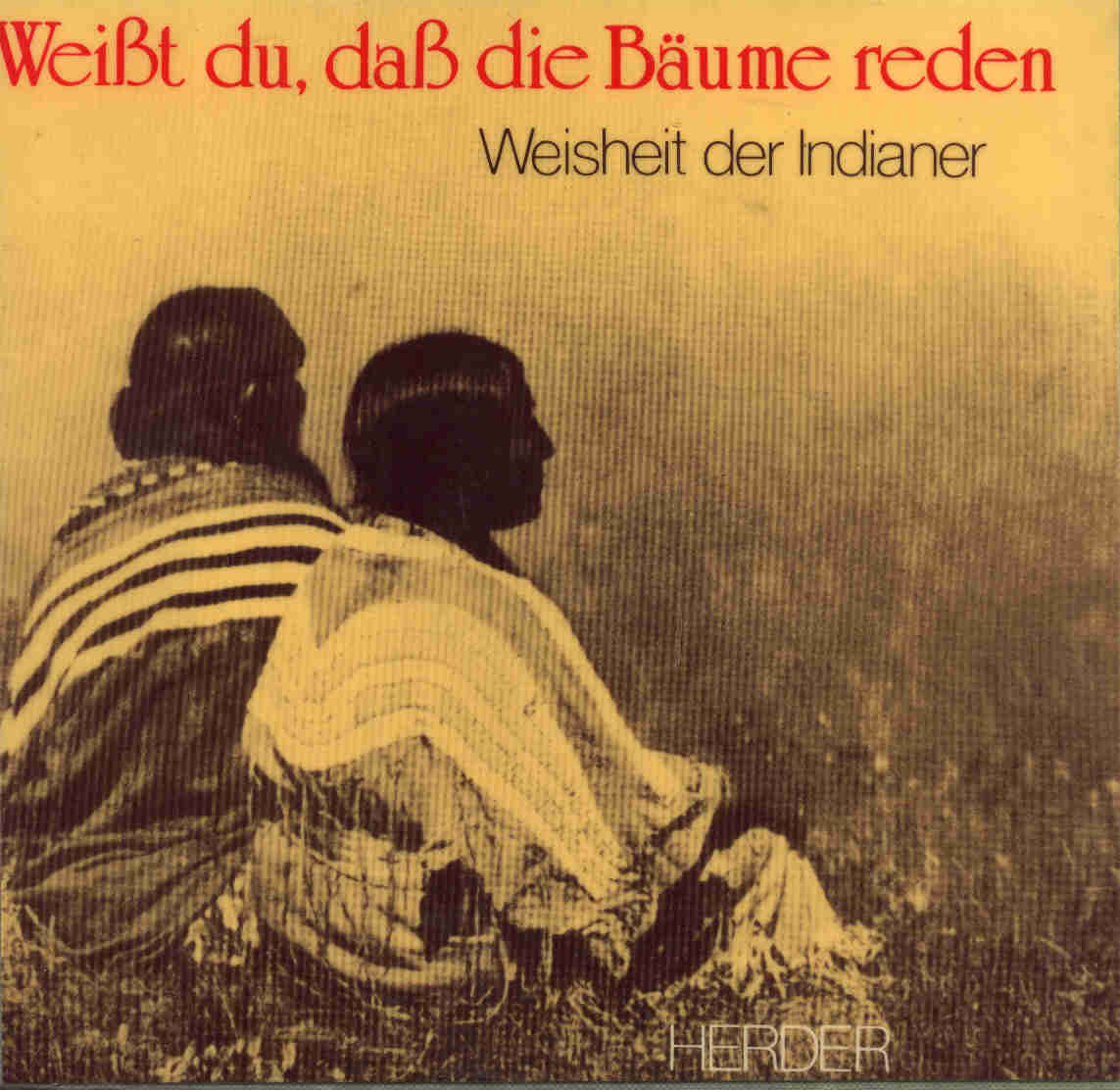
"Weißt du das die Bäume reden" (Ever heard the trees talking) by the Herder Publisher is for people who are looking for real wisdom one of the best books which I can recommend. A collection of texts and verses by many different indian authors. "We have lost our land and our freedom but we still have our way to think and to live. As indians we could contribute an important part to your culture. Only few white people think about the fact that people with other skin colors, red or black or yellow, make thoughts about ways to make this world a better place."

Derib is a comic artist and indian expert from Switzerland. With "Yakari" he had his first opportunity to draw indians in form of a cartoon series for children. But Yakari has not much in common with the fantastic drawings of his later works. "Buddy Longway" is a series of 16 books about a trapper who married an indian woman. Initially only a lonesome fur hunter, Buddy is confronted more and more with invading settlers, gold diggers and militaries as the story evolves. In his two latest series indians dominate the story. "The way of the shaman" is a trilogy about the life of a medicine man, his visions, his powers, his initiation and his life. The comic "Red Road" which consists of four parts probably is the most impressive book, a young indian who lives in a reservation moves away from his alcohol-addicted family and travels through the lands and into the cities of the white men. Here he meets an old chief who brings him back to his indian roots. Awesome!
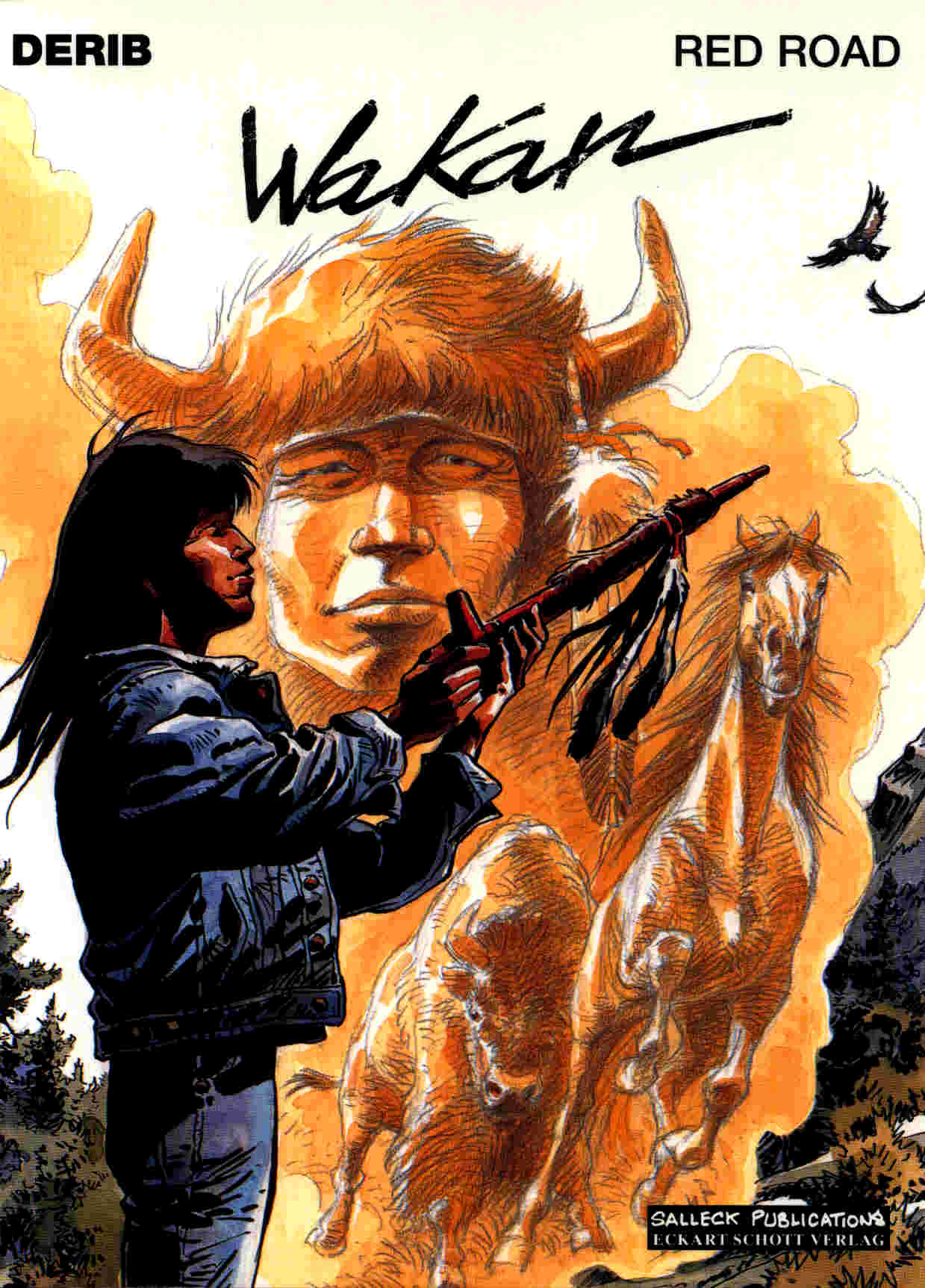

"He who dances with the wolf" with Kevin Costner is a very realistic movie about a former cavalryman who gets transferred into the wild west. Here begin deep friendships with the indian natives and also with a solitary wolf. But soon the white indian is confronted even here with the expansion of military troops. The indian Graham Greene has had his first and most popular role in this movie.

"Clearcut" Graham Greene's second movie which deals with a topic which is very important for me: the destruction of ancient forests by transnational wood companies. Unfortunately the movie is almost too brutal and almost at the border of what can be beared. Can be recommended only with restrictions.

"Medicine Man" with Sean Connery. A movie about South American indians. Sean Connery explores the lost medical wisdom of the Amazon indians. I hope this movie is understood as a request for the preservation of the rain forests and not as an advertisement for gene piracy, this would be only as if you write a few titles down from a burning library.
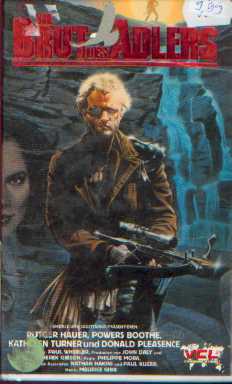
"A breed apart" A friend of me who guards falcon nests for several weeks in each year follows the policy to let lost wanderers and freeclimbers see through his telescope to refresh their love for nature. But what is to do if Vogon constructor fleets without any love and reason appear "only to fulfil their duties"? This movie with Rutger Hauer is different from the usual action schemes, it shows a game warden who can not only protect, but also knows how he can defend the work of his life. BTW, the eagle is for the most indian tribes a holy animal which represents courage and valor.
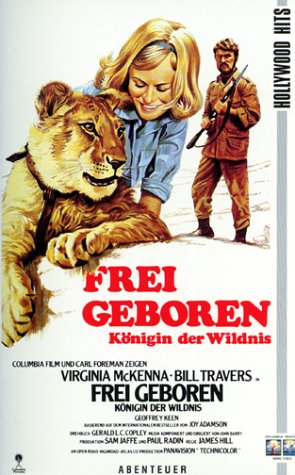

Such people which sacrificed their life for nature and rare species in the best indian spirit have existed in reality. Think for example about Michael Grzimek or Diane Fossey who has been murdered by bandits in the most brutal way. But the prototype of a fighter is for me George Adamson, the "old man with gun and stick" and the only real lion-man, author of the movie "Born free" and the book "My pride and joy". He was no transfigured animal protector, but a realist who has never antropomorphized animals but knew their habits and tricks and respected them, frequently his gun and stick served the purpose of self-defense. He intervened actively when the movie workers mistreated animals during the creation of the movie and made the bad things known in the public. He brought back lions from the captivity into the wilderness several times. He lost his wife by violence and he died in the battle with bandits and poachers himself with the weapon in the hand, like a lion. Such men don't exist anymore in this days, his successor is a softie for me who has it not even managed to find a place for an orphan lion in an official national park. Half of the nature protection today consists of arrogant specialized idiots and bureaucrats who would prefer to fence in everything and don't have anything to do except to persecute the people who make the practical work and have to knuckle down because they are dependent from their money. Moving stories like "Born free" are no more possible today, an orphan animal which has been grown up in captivity also has to perish in captivity! And if you think the animal protectors are self-righteous barf lumps who shoot at their own men, block all dialog with other professions and all sensible work to maintain species diversity and who do not even move their small finger without filling out a stack of forms in triplicate, then wait until you have met the plant protectors. See also my Nature protection page.
|
Ketambe Gunung Leuser National Park SUMATRA First time I have touched this book for days. I must be mad to have gotten myself mixed up with Werther. He is brilliant, very probably the finest naturalist I have ever met. At times his virtuosity is exhausting. It is always breathtaking. The other morning in a patch of forest up in Aceh we came across a feeding flock of birds and he began identifying them, rattling off their names, using their scientific names only - Pycnonotus squamatus, Malacopteron magnum, Malacopteron magnirostre, Stachyris maculata, and so on, faster than I could even spot them, a performance fit for the stage. I understand him more and more. I have even come to like him. What I do not understand, what I cannot understand, is how he can go on living with all that bitterness. Whenever he speaks of a certain wild place he has been, whether it is in Africa or in South America or Asia, he cannot help appending some comment as to how it is being degraded or destroyed or how many years (usually few) remain until it and its inhabitants will vanish altogether. Sometimes the very mention of a place is sufficient to work him up into a towering rage. Then it is a1l blackness. The list of people who disgust him, whom he hates, whom he would like to kill (or who he predicts will be killed), is seemingly endless. At the same time, or rather at different times, he can be calm and strangely gentle. This inevitably occurs when he has found something in nature to look at. I have seldom come across anyone so able to turn his entire concentration on a single object. The other morning at Brastagi we were up on the edge of the volcano. It was early morning, and as is usual at that hour, we were out birdwatching. We had been working the trail for about half an hour without much success when he either heard or saw something moving in the very top of a tree we were approaching. Flipping up his binoculars, he was able to focus on the bird immediately and point it out to me. "Get on that bird quick!" I was already on it. It was a thrush-size bird, entirely cobalt blue, with a noticeably long tail and a dark bill. "A whistling thrush?" I asked. "Something better than that." He smiled. "You don't mean the cochoa?" "Yes, that is exactly what I mean." "Are you sure?" "Yes, a moment ago it was perched on a branch in good light and I could see the forehead very clearly." I looked back at the bird, hopping front branch to branch, feeding on berries. I could not see the forehead because the bird was now in a shadowy part of the tree's crown, an area dappled with shadows. Nevertheless, I knew that he was right. It was Cochoa azurea, known in the English-language guides as Malaysian cochoa - one of the rarest and least known birds of Southeast Asia. I looked back at Werther and he was beaming. It was as though just then all his cares and hatreds and excesses had fallen away. It was as though he had not simply sighted a rare bird but rather had seen something infinitely more precious, perhaps an angel.
Richard Ives, "Of tigers and men"
|